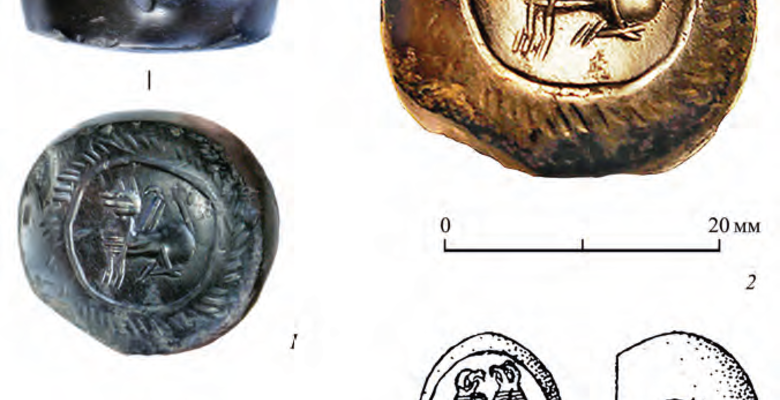
The stamp made of sardar (type of chalcedony) has a semi-spherical ellipsoidal flat-convex shape with the longitudinal section of 27.5 x 25.0 x 21 mm with a cord hole of 3.8 mm in diameter. The center of the flat surface depicts a carved winged animal placed inside a circle. The external side carries a ring of slanted ribbed inlaid pattern. The plot of similar images (a posing animal) is defined as “seated griffin”: the front legs are stretched out with the hind legs bent.
According to its age the stamp is not related to the XI or XII century antiquities, as it is several centuries older. It is an artifact of Sassanid Iran, the applied art of which continued the ancient traditions of carved stone. Taking into account the specific carving technique the gem can be attributed to the VI-VII centuries.
Andrei Leontiev, PhD in History, of the Institute for Archeology of the RAS, writes that prior to this discovery the only Sassanid stamp found on the territory of Ancient Russ’ had been found in Gnezdov. It was found during the 1970 excavations at the settlement. The Gnezdov stamp can be attributed to the same type and is similar to the Rostov stamp in its shape, but smaller in size and has been well preserved: it has no visible damage with the polish fully intact. The image is different: half-images of two birds are placed on the horns of a bulls’ head.
The circumstances of how the Iranian gems found their way to Gnezdov and Rostov have no clear explanation, believes Andrei Leontiev. One can assume that the stamp from Rostov at some point in its history in Russia served as a chip or checker in a table game.







